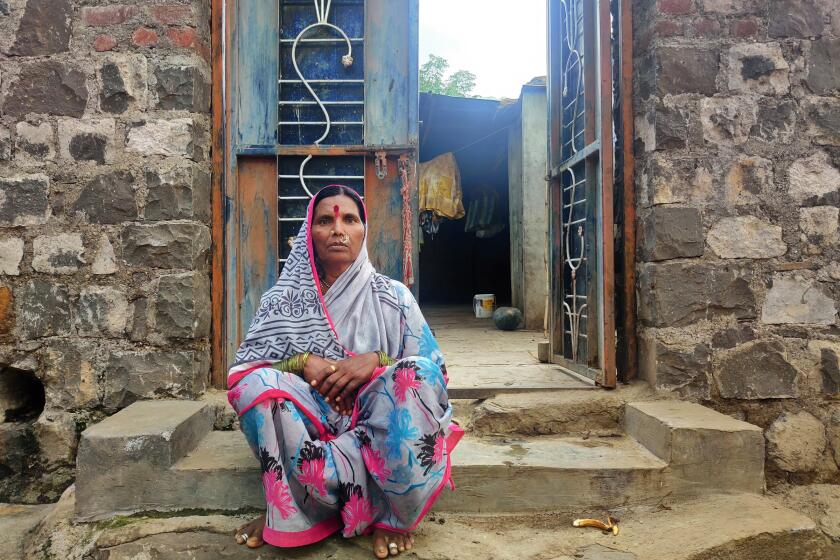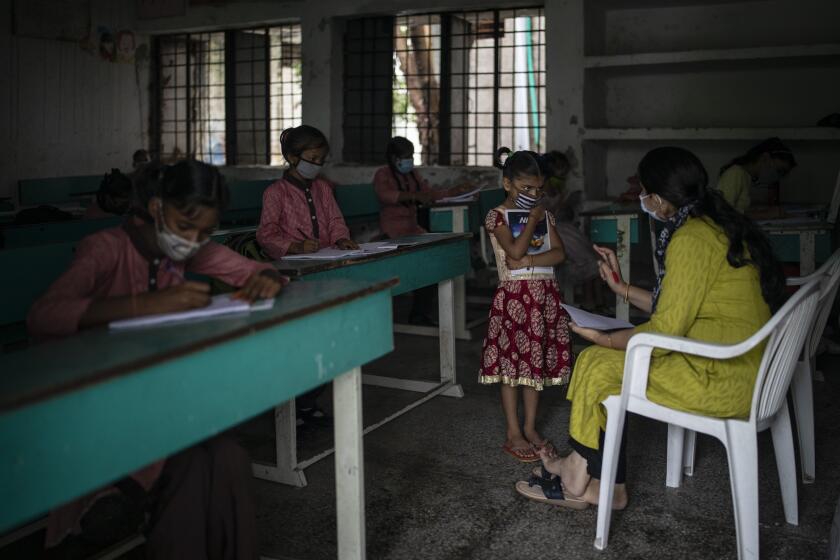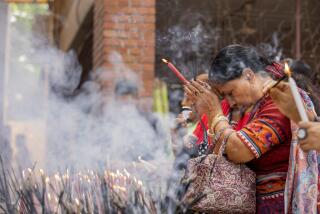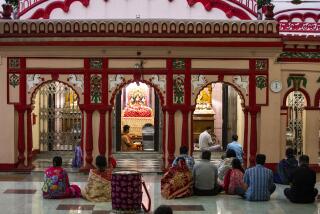An Indian village braces for a New Year’s tribute to the downtrodden
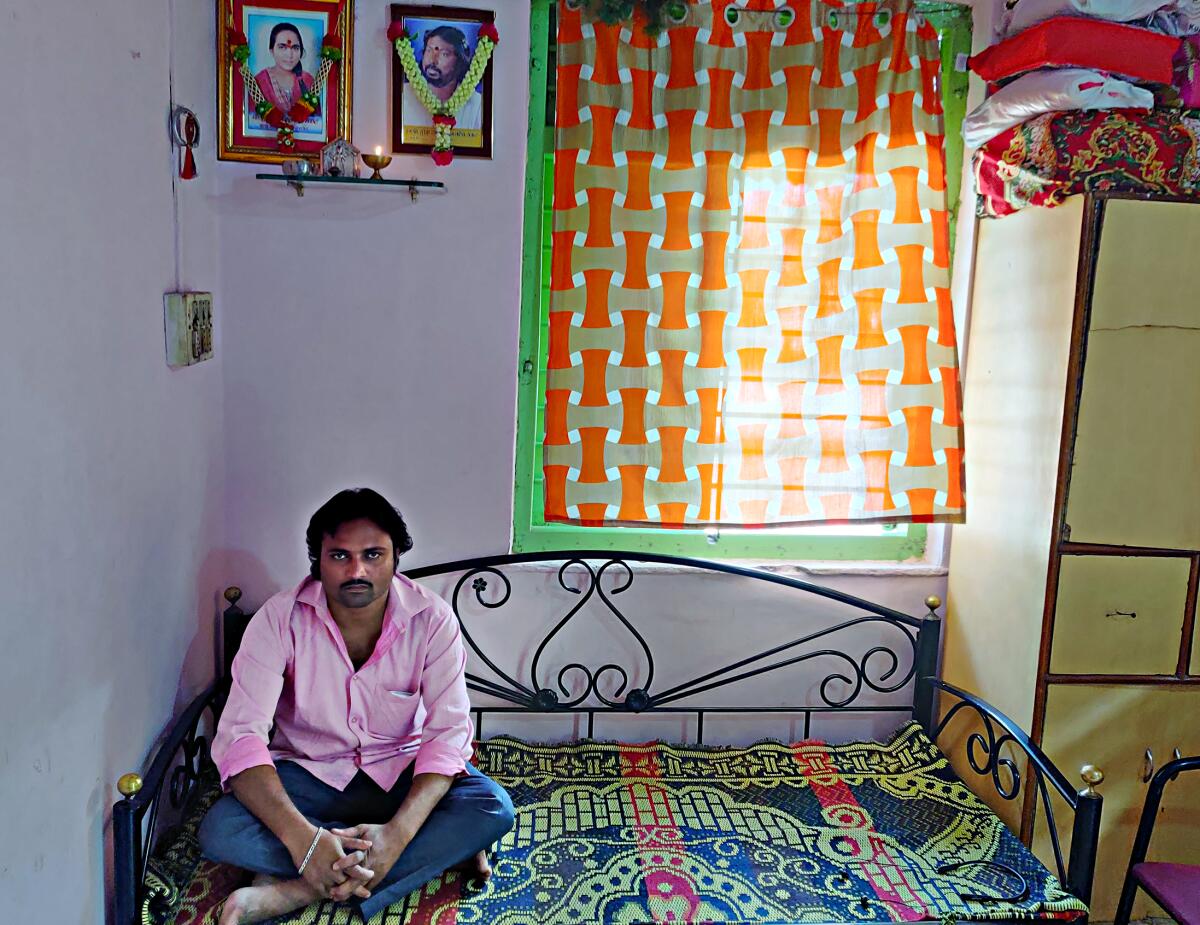
PUNE, India — Each New Year’s Day, tens of thousands of people travel to a village in western India called Koregaon Bhima to visit a war memorial that has become a sacred monument to the country’s downtrodden castes.
Jaydeep Sakat and his family spent many of those days outside their tin-roofed home and adjoining food stall serving free rice and tea to the pilgrims — most of them fellow Dalits, who were once known as “untouchables.”
For the record:
5:11 p.m. Dec. 26, 2021An earlier version of this article incorrectly said authorities promised Jaydeep Sakat $11,000 in compensation for the destruction of his home and food stall. The money was to be compensation to his family for the death of his sister. The original article also incorrectly said that the two men arrested in her death had helped her commit suicide. They were arrested for allegedly causing her duress that contributed to her death, which authorities deemed a suicide.
Next week they plan to feed the pilgrims once again.
But things haven’t been the same for Sakat or the village since 2018, when a mob descended on the ritual and attacked the pilgrims and those who welcomed them. The violence and its aftermath were a reminder of how little has changed for those at the bottom of India’s rigid social hierarchy.
With his home and business burned to the ground, Sakat now lives miles away in temporary housing. Those responsible for the wreckage and at least one death remain free, while several rights activists and scholars have been arrested and charged with instigating the riots.
“Our attackers are out in the open,” said Sakat, 28, adding that the village where he had lived for 15 years “isn’t home anymore.”
Rahul Dambale, a Dalit activist from the nearby city of Pune, said justice for members of his caste is rare.
“Government institutions don’t move quickly on these issues and end up protecting the perpetrators and the discriminatory caste system,” he said.
The system dates back more than 2,000 years and is based on ancient Hindu texts that divided people into four major castes, each divided into numerous sub-castes. At the top are the Brahmins (priests and teachers), followed by the Kshatriyas (rulers and warriors), the Vaishyas (merchants and agriculturists) and the Shudras (artisans, laborers and servants).
Beneath all of those are the Dalits, who number about 200 million — 14% of India’s population — and historically have been limited to scavenging, begging and sanitation work to survive.
In 1950, three years after independence, India banned discrimination against the Dalits and other marginalized communities and created an affirmative action program to help them get government jobs and school placements.
Still, prejudice remains pervasive. Last year there were more than 50,000 homicides, rapes and other assaults against citizens, usually Dalits, based on their social standing — crimes the government classifies as “caste atrocities.”
Prime Minister Narendra Modi, a populist who presents himself as a champion of the poor and once called for a day when India would be “free from the venom of casteism,” won election and reelection with a large share of the Dalit vote. But critics say that support comes primarily from his appeals to Hindu nationalism and that caste divisions have only widened during his seven years in office.
As always, most of the people in India cleaning sewers are Dalit. In several villages, Dalit women aren’t allowed to fetch water from the common well.
Earlier this month, a political candidate who lost a village election in the state of Bihar was captured on video forcing two Dalit men to lick spit off the ground as punishment for not voting for him.
Pride does not come easily for Dalits — which is why the memorial in Koregaon Bhima is so significant.
The 60-foot obelisk commemorates an 1818 battle in which the British traders representing the crown defeated the Peshwas, the Brahmin rulers of the Maratha empire, ending its 144 years in power.
Dalit soldiers fighting for the British played a major role in the victory — which came to symbolize the Dalit community’s fight against untouchability.
The annual celebration long irked some in the local Maratha community because it was a humiliating reminder that a fellow upper caste had been defeated by the Dalits.
Working up to 14 hours a day and living in squalor, migrants fuel a $1.7-billion sugar industry. Female laborers suffer the most, coerced at times to undergo hysterectomies so that menstruation won’t interfere with work.
Tensions were especially high in 2018. The bicentennial of the battle had drawn more pilgrims than usual, and Maratha leaders declared a strike to shut down the town and the visitors with nothing to eat or drink.
“We and many others from our community defied the strike and ensured breakfast and meals for the pilgrims,” Sakat said.
In the early afternoon, Sakat and his 19-year-old sister, Pooja, could see mobs walking along a highway toward their home. It was too late to run, so the siblings hid behind a wall next to their house, trembling and holding each other tightly.
They watched as the rioters attacked Dalits and smashed stores. Scores of people were injured, and a local 28-year-old — whose family said he was nothing more than a bystander — was killed.
Finally the mob came to torch Sakat’s home and business.
He was shocked to see many of the rioters were neighbors he knew well.
Still, even before the violence, his standing in the village had been weakened by an influential member of the Maratha community who spent years trying to buy his family’s land. Without a home, the family was essentially banished from Koregaon Bhima.
“We were boycotted,” said Sangeeta, 46, Sakat’s mother. “Nobody would give us a house to rent.”
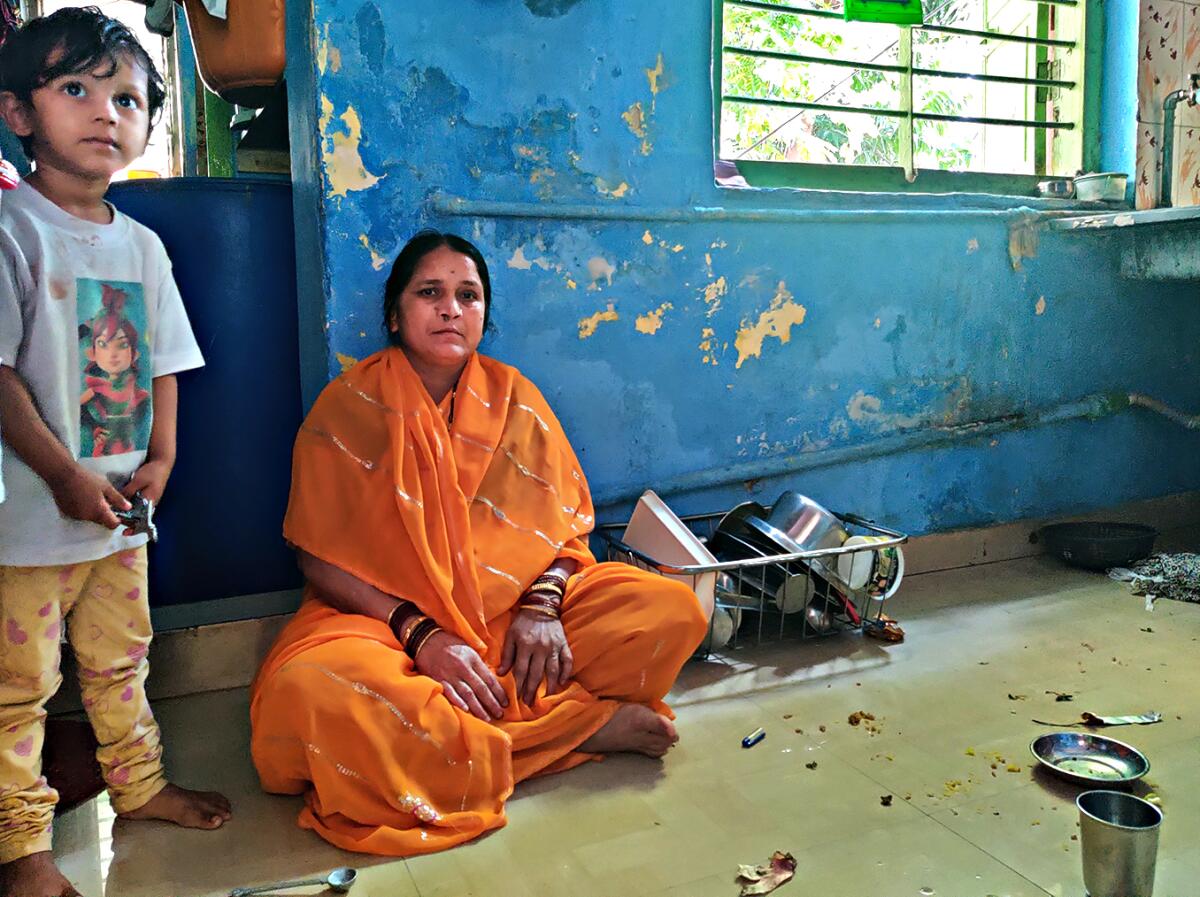
They managed to find a one-bedroom rental in a neighboring village. It was there, four months after the riots, that Pooja went missing.
Her body was discovered the following day in a nearby well.
Even though her face had 16 cut marks, police deemed her death a suicide. Police arrested two men for allegedly causing her duress that contributed to her death but offered no details. They remain free on bail.
Sakat has a more clear-cut theory about her death: “She was killed because she was an eyewitness.”
Education lifts many out of poverty in India, but COVID has closed schools. Now India is bracing for a surge in child labor and underage marriages.
Sakat found work as a driver and laborer and spends his remaining time as a social worker helping other marginalized caste members.
The Maharashtra state government eventually moved him and his family into a one-bedroom apartment 25 miles from Koregaon Bhima in Pune, where they felt safer. It was supposed to be temporary, but the family remains stuck there.
Authorities promised $11,000 in compensation for Pooja’s death but have paid only half of that.
Sakat had little choice but to sell the family land back in the village to cover medical bills for his father, Suresh, who suffered a stroke last year and died soon after.
Suresh, a rights activist who was known in the village for blocking traffic to protest the mistreatment of Dalits and other poor people, had taken Pooja’s death especially hard.
“He would put up a brave face in front of us, but inside he had been emasculated,” his wife said.
Pooja had been studying to be a doctor and was a source of hope for the family. Having her death labeled a suicide was an indignity, but not a surprise.
Sakat, like many other Dalit residents in the village, said the police have not properly investigated the riots, alleging that thousands of people were given a break because they supported the ruling Bharatiya Janata Party.
“The cops have protected the rioters,” Sakat said. “There was no will to get to the bottom of the attack.”
Records show that police arrested 234 people — all of them currently out on bail.
Police defended their investigation and blamed a small number of people for committing most of the offenses.
“We arrested people based on the video footage and other evidence,” said Abhinav Deshmukh, Pune’s superintendent of police. “In some cases, an accused has been named across complaints. Therefore, it might come across as a conservative number.”
More surprising to many people, Maharashtra state police arrested 16 activists in connection with the riots, accusing them of an outlandish plot to assassinate the prime minister and charging them with sedition under an anti-terrorism law. Among those arrested was Anand Teltumbde, India’s leading caste scholar and a Dalit.
The case against the activists was subsequently handed over to national police after state authorities raised questions about the investigation. Amnesty International reported that evidence against the defendants may have been planted on their phones using military-grade malware provided by the Israel-based hackers-for-hire, the NSO Group.
All but one of the activists remain in jail after prominent human rights lawyer Sudha Bharadwaj was granted bail earlier this month.
The annual pilgrimage to Koregaon Bhima has been accompanied by a heavy police presence since the 2018 violence. It was canceled a year ago because of the pandemic.
Though it will be the third time he’s attended the pilgrimage since the riot, Sakat said being in Koregaon Bhima fills him with unease.
Still, he plans to transport his oversize pots to the village on New Year’s Eve and spend the night there preparing steaming portions of pulao, basmati rice cooked with spices and vegetables for thousands of pilgrims. The food is paid for by donations from Sakat’s fellow social workers and his late father’s friends and colleagues.
Sakat said he’ll set up the kitchen as close as possible to where his house once stood.
Special correspondent Parth M.N. reported from Pune and Times staff writer Pierson from Singapore.
More to Read
Sign up for Essential California
The most important California stories and recommendations in your inbox every morning.
You may occasionally receive promotional content from the Los Angeles Times.
